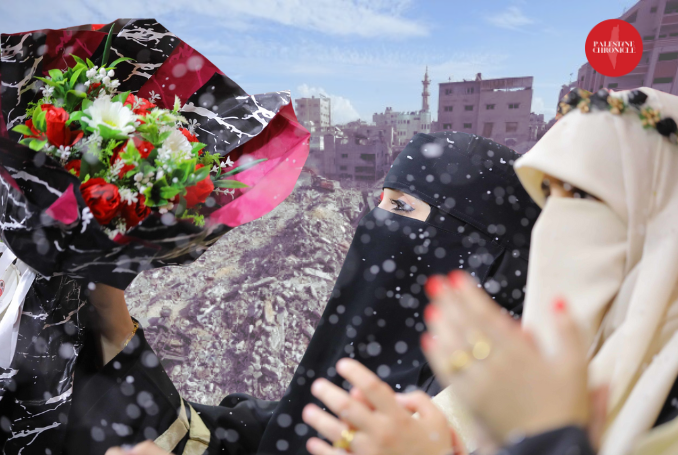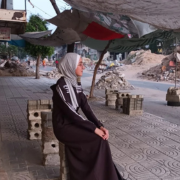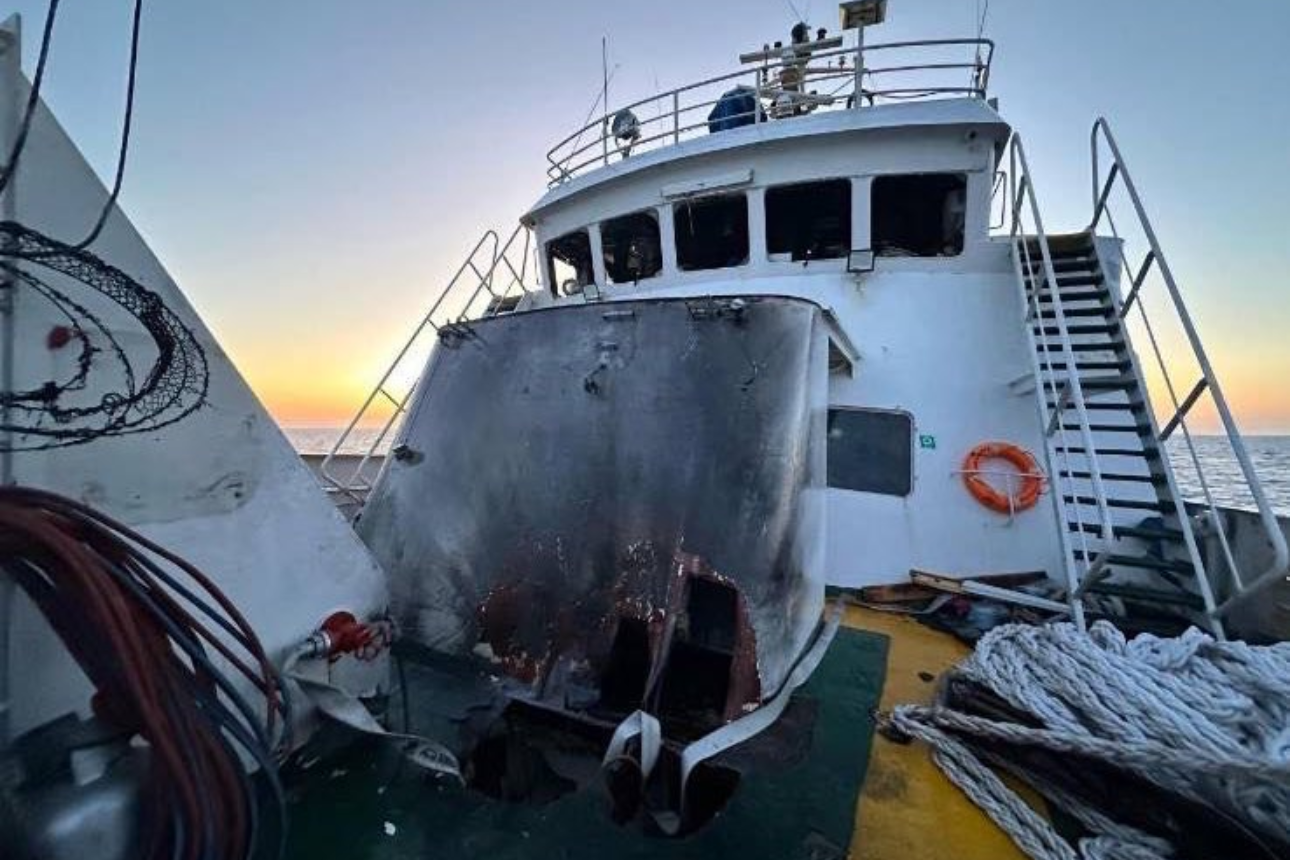

By Fatima Skaik
In that moment, I understood: We do not study for degrees—we study to prove we are alive, that we deserve to survive.
I write these words as I sit on the rubble of my home, surrounded by the wreckage of my shattered dreams. My fingers trace the remnants of what was once the wall of my room. I sift through the ashes, searching for a pen, a piece of paper—any trace to remind me that I was once a human being here, a student of architecture who dreamed of building cities untouched by war.
I am a young woman studying architectural engineering—a dream I’ve held since childhood. A dream once filled with colors, lines, and beautiful designs, but under the fire of war, it has turned into daily agony and hope is crumbling beneath the debris. In Gaza, we do not live normal lives, nor do we study like others. Every day is a battle for survival, yet we carry our books, our devices, and our dreams on our shoulders and press on.
I have been cut off from my studies for over a year—a year of pain and waiting, a year of searching for a glimmer of hope in the darkness of destruction. Each morning, I wake to the sound of bombs and the terror of the unknown. I walk through streets that no longer know safety, searching for an internet signal to attend my lectures, for a sliver of electricity to light the gloom of my day.
Dreams in the Rubble: A Generation in Gaza Resists through Education
I was forced to venture out daily on perilous journeys, going to places where I couldn’t even guarantee my own safety, just to find the internet connection I needed to study. With each passing day, the dream of graduation dimmed in my eyes.
Every moment was wasted searching for a quiet place to study, to contact my professors, to submit assignments. I didn’t just need the internet—I needed a safe space to focus, to silence the internal wars raging in my heart. It felt as though I was fighting in every moment—whether searching for a signal or fleeing from an airstrike creeping closer.
Under these conditions, distance learning felt like a distant dream. Architectural engineering, a field that demands hands-on application, was reduced to mere theoretical material on a computer screen.
How could I grasp building design or draft blueprints when the tools I needed were destroyed? How could I learn to use a 3D printer or work on engineering models when the equipment I required lay in ruins—when my home, once my studio, was now mere wreckage? The occupation destroyed everything, even the hope of returning to those rooms once filled with my dreams and ambitions.
As exams approached, my suffering multiplied. Securing a stable internet connection in those days was nearly impossible. Sometimes, I attended lectures by candlelight, studying from hastily scribbled notes on colored paper because I couldn’t access digital materials or the resources crucial for my exams. Time slipped away, and in my heart festered a deep fear: “Will I make it through these stages, or will this war mark the end of my dreams?”
The exams were a nightmare. Imagine being asked to submit a precise project by a deadline while having no electricity, no internet, not even a safe place to sit. I moved between houses and centers, searching for a weak Wi-Fi signal, a portable charger, a candle to study by.
I took my exams with my heart elsewhere—because an invasion could begin at any moment, because the occupation might storm the neighborhood or bomb the area suddenly, because death was closer to us than anything.
March 18, when Bullets Became My Final Blueprint
The night bled into Gaza’s sky. It was past midnight, and I sat among my architectural sketches, trying to rebuild what remained of my shattered city—as if the pencil in my hand could undo what the occupation’s tanks had wrought.
My scattered blueprints bore lines of houses, hospitals, and schools—projects that would never be realized. Yet I drew them to prove to myself that we were still alive, resisting through dreams.
Suddenly, the silence was shattered by the blare of Israeli loudspeakers, slicing through the night like a knife:
“Final warning… This is Al-Shifa Hospital… A dangerous military zone… You will be eliminated within minutes.”
Those words crashed down on me like boulders. I looked around—my engineering bag filled with blueprints where I redrew what the tanks had destroyed, my clothes bag now just a relic from a time when I was an ordinary person, a plastic bag holding scraps of food from days of starvation. Three choices, all equal to death.
The Unfolding Tragedy of Gaza’s ‘Tawjihi 2006’: A Generation on Hold
In that moment, I understood that the engineering I studied would never build a roof to shield me from missiles, that the pencil with which I sketched the future could never erase the bloodstains on Gaza’s walls. Even my small bag became an existential question:
Do I take my projects, which may turn to rubble tomorrow?
Do I take my clothes so I can die “presentable”?
Or do I take the dry bread—because my starving body deserves one last bite?
My eyes searched for an answer among the ruins of impossible decisions, while my heart screamed:
“Even escape has become an exam with no passing grade… All paths lead to death, but I must choose how to carry it!”
In the end, I grabbed my engineering bag—not because it was the most important, but because it was the heaviest. I carried it like a coffin for my childhood. I stepped into the street where darkness licked the faces of those fleeing, where the sky rained fire. I knew my blueprints would burn with our homes, but something in me rebelled and said:
“They will not steal the last thing I own… I will keep drawing life, even as I run through death!”
That night…
That night was not just an escape. It was the moment I understood that in Gaza, we do not have the luxury of choosing between life and death—only between forms of death. That “survival” is just a lie we tell ourselves to keep from going mad with terror.
That night… I learned that war does not just steal lives—it steals even our right to dream of a dignified death. I learned that “engineering” in Gaza means designing escape routes from an endless hell, that “future” is a word we whisper in fear, as if it were a curse.
LIVE BLOG: Israel Resumes Genocidal War on Gaza, Hundreds Killed – Day 528
Now, whenever I pass by the university street, I remember that an invisible hand erases what we build even as we sketch it. Yet I still carry my engineering bag. Perhaps one day, we will discover that every line we drew under bombardment was a form of desperate prayer:
“Look at us… We are here… Trying to resemble human beings despite everything!”
Between Thesis Words and the Roar of Missiles
My fingers trembled over the keyboard—not from cold, but from the glow of the screen, my only portal to a world beyond Gaza’s vast prison. I pulled myself into that distant space where the internet signal was a small theft from the occupation’s claws.
“Doctor, this is my design for a rehabilitation center for war survivors,” I said, forcing confidence into my voice while my eyes watched the sky.
Just as the professor began his feedback, the world exploded. The internet outage was not just a technical glitch—it was a deafening scream: “There is no room for dreams here.” The missile that struck didn’t just shake the earth—it shattered our belief that knowledge could protect us. I was mere meters away from death.
Three hours of nothingness.
My mother moved between hospitals, lifting the shrouds of children, searching for my face.
My father dug through nearby rubble with his bleeding hands.
My little sister screamed in the street: “My sister is an engineer—she has nothing to do with this war!”
I returned home late to find my family mourning me, grieving me. The laptop I clutched the whole way felt heavier than a mountain—not because it held my final project, but because it was the only witness that I had tried to be more than just another name in the martyrs’ registry.
“My daughter… We thought you had become one of those whose lives are reduced to a death certificate,” my mother said, squeezing my hands as if confirming I was still here.
Hundreds of Palestinians Killed as Israeli Army Resumes Genocidal Assault
In that moment, I understood: We do not study for degrees—we study to prove we are alive, that we deserve to survive.
Now, when I walk through that area, I see my shadow imprinted on the wall like a witness:
“Here stood a student defending her future while war debated her right to exist.”
We do not draft our projects on paper—we carve them in blood on the walls of time, so the world knows Gaza was never just a place of death. It has always been a school where we learn to forge hope from the ruins.
This is but a fraction of what I endured in my studies during this murderous war.
I am the dreaming architecture student, Fatima Skaik.
(The Palestine Chronicle)

– Fatima Skaik is a 21-year-old Architecture student at the Islamic University of Gaza. She contributed this article to the Palestine Chronicle.







